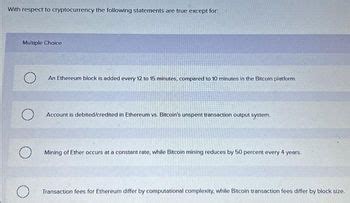Ethereum secrets unlocking: Undeted/used flag Blockchain
As a beginner in the Blockchain world, it is natural to feel overwhelmed with complex concepts and terminology, used to describe how cryptocurrencies work as Ethereum. One such concepts are used/unprecedented flag, which at first glance seems frightening. In this article, we will delve into what the flag used/used in Ethereum means to investigate its effects on Blockchain.
** What is the flag used?
The flag released indicates whether the transaction has been released or not. The missed operation has already been processed by the net and cannot be replaced or canceled. Conversely, an unrealized operation is still awaited and was not included in Blockchain. This flag plays a crucial role in ensuring the integrity of Ethereum Blockchain.
** How does it work?
When an Ethereum Blockchain is created, it is divided into two parts: input (from which the funds are removed) and the exit (which the funds are sent). The unfavorable/used flag is determined by verifying whether the input was released or not. If the input is not used, the operation is considered unpaid. Conversely, if the input is released, the operation is also not transmitted.
** Why is it important?
Ethereum operations can either be “signed” (i.e. their value and identity are protected) or “not written” (i.e. they do not provide any protection). When the operation is signed, it is considered unfavorable unless the sender has submitted title to the input. This ensures that only lawfully consumers can spend on funds from a non -transferable input.
In simple terms:
Think about it as follows:
- If you take some money (input) from your bank account, but then use most of it and do not deliver any refund, the bank may mark the transaction as “unfavorable” because it is no longer valid.
- And vice versa, if you spend all your money in advance, the transaction is marked as “spent”, even if still left.
Effect on security

The unfavorable/used flag has a major impact on the security of the Ethereum block circuit. To ensure that surgery is not replaced or canceled, the network protects consumers from possible fraud and fraudulent activity.
In addition, the flag used helps prevent double -cost attacks when the user tries to release the same input on different operations twice. This ensures that each operation is unique and cannot be replaced or replaced.
Conclusion
An unfavorable/used flag is an essential concept for understanding how Ethereum surgery. By arresting this main Blockchain aspect, you will need to deepen the mystery and integrity of the network. You will find more nuances and complexity after learning about Ethereum and many of its features that will help you browse the Blockchain world.
Now that you have unlocked the secrets of unused/used flag, move your knowledge to another level by exploring other aspects of Ethereum such as intellectual contracts, decentralized programs (DAPP) and more!
